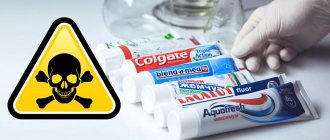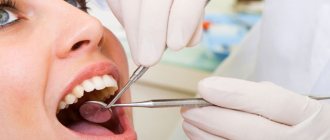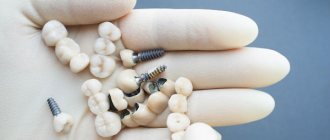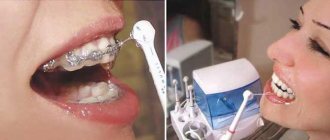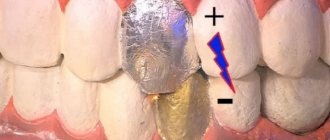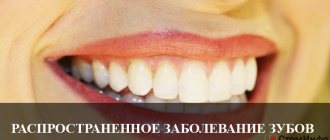Home » Health » Sugar causes tooth decay and damages your teeth
HealthFoodProducts
16.04.2017
3352 Views
Everyone knows that foods containing a lot of sugar are bad for your teeth. But this opinion was not always supported.
In fact, when the Greek philosopher Aristotle first noted that sweet foods like dried dates lead to tooth decay, no one believed him.
But, as science progressed and research into this issue, it became obvious that sugar leads to tooth decay.
In this case, the main “culprit” is not the sugar itself, but the processes that occur with it. They are described in this article.
How exactly do teeth deteriorate?
Eating a delicious bun and a bar of chocolate undoubtedly gives us pleasure, however, at this moment processes begin to occur in the human body that are not associated with anything pleasant.
The food we eat can harm us in the following ways:
- To digest various types of sugars, the body requires calcium, among other elements . The largest store of calcium in our body is dental tissue. It is from there that the digestive system takes the amount of this element necessary for digestion. As a result, with frequent consumption of chocolate, teeth become thin and quickly decay;
- When you eat sweets, sugar syrup remains in your mouth, in which bacteria quickly begin to grow and multiply. As a result of their vital activity, a fermentation process occurs and various acids are formed that destroy the enamel.
Thus, the negative impact of chocolate and other carbohydrate foods has two main directions. What they have in common is that a person may not notice or feel anything for a long time until the loss of a tooth.
The effect of sweets on the skin. Sugar and skin
The condition of the skin can be worsened by sweets such as pastries, muffins, cakes, rolls, which contain a lot of not only sugar, but also fats and simple carbohydrates. The abundance of such components is a beneficial environment for the proliferation of pathogenic bacteria in the gastrointestinal tract, and, as is known, a violation of the intestinal microflora, in other words, dysbacteriosis, is one of the reasons that provokes unwanted rashes on the face, chest or back. In addition, rarely can anyone boast of a balanced diet, the absence of which is the root cause of problematic skin, which, combined with excessive consumption of sweets, can further aggravate its appearance.
It has also been proven that sugar accelerates the aging process of cells, which leads to the premature appearance of wrinkles. At the same time, danger lies not only in sweets in their usual form, but also in products containing maltose, molasses, barley malt or fruit juice concentrate.
Which foods are the most harmful?
Products containing refined sugar . These sugars have their natural composition altered through chemical processing. Such products are harmful not only to the oral cavity, but also to the entire body.
They increase the overall level of sugar in the blood, as a result, failures of all vital processes occur.
- All types of sugar (white, brown, powder);
- Artificial honey. As a rule, most store shelves are filled not with natural, but with industrially produced products. As a result of processing, a huge amount of sugar is processed into a mass similar to honey in color and consistency;
- Various syrups;
- Fruit juices;
- Ice cream;
- Cakes, waffles, cookies, sweets - everything that is customary to buy “for tea”;
- Jelly, jam, preserves, pudding, yogurt;
- Chocolate, including dark;
- Bakery products;
- Sweet sparkling water;
- Bakery products;
- Condensed milk;
- Dessert wine.
So, if you are concerned about yourself, then before you buy a product, take a look at the packaging. Natural sugar is found only in milk, as lactose, and in fruit, as fructose. In all other cases, if the product contains sugar, it is a harmful refined product.
If a product contains information about the amount of sugar per serving, pay attention to the size and number of servings in the package. It is unlikely that you or your child will limit themselves to just one serving.
Dried fruits
When fruits are dried, their water content becomes zero. But the concentration of natural sugar increases. Dried fruit often becomes as sticky as caramel. They stick to the teeth and create favorable conditions for the occurrence of caries.
Swedish scientists believe that the body develops immunity to Covid-19
The new Suzuki Across is a plug-in hybrid of the Toyota RAV4 with a different front end
I no longer use store-bought conditioner: my homemade product makes my clothes soft
Why does sweets hurt your teeth?
If you are familiar with this feeling, then you have probably wondered why it happens. The reasons may be the following:
- Microcracks have already formed in your teeth. Consumed sugar penetrates the nerve endings of the molar and causes pain;
- You have a thin layer of tooth enamel, which may be a consequence, among other things, of a lack of calcium in the body;
- Caries;
- Inflammation of the gums;
- Damaged molar with exposed nerve.
Thus, discomfort when consuming sugar may indicate both the consequences of consuming large amounts of refined carbohydrates and the presence of dental problems and the need to visit a doctor.
The effect of sweets on teeth
Increased tooth sensitivity to sweets is one of the symptoms of hyperesthesia. This disease manifests itself in the form of short-term pain in response to exposure to temperature, tactile or chemical stimuli. The intensity of pain can vary: from minor discomfort to barely bearable sensations.
Moreover, when it comes to the reaction to sweets, we can talk about second degree hyperesthesia. If you think back in time, it will probably turn out that at first your teeth responded only to sudden changes in temperature: cold air, hot coffee. Now you can no longer eat a bar of chocolate or your favorite cake without pain. If you do not take action, very soon the tooth will begin to react even to a simple touch, and basic oral hygiene will turn into real torture.
Why do teeth hurt from sweets, hot and cold?
To understand the mechanism of pain, first of all, it is worth remembering that a tooth is not just a bone formation intended for grinding food, but a complex organ that must be able to send a signal to the brain about its condition. And he has it, because a dense network of nerve endings is hidden under the durable enamel.
The soft, sensitive core of the tooth is called the “pulp.” The intermediate layer between the enamel and pulp is porous dentin, penetrated by many very thin channels. It is through them that impulses pass to the nerve endings of the pulp if damage suddenly appears in the enamel.
If the tooth is normal, it will not hurt, since the dentin tubules are securely closed with enamel. But for her, it’s not mechanical influences that are more scary, but chemical ones. Thus, sugar supplied with confectionery products cannot in itself harm the enamel, but it is a desirable food for lactobacilli and streptococci that live in the oral cavity.
When processing sugar, bacteria release acids: butyric, formic, lactic, propionic. They are not too strong, but with prolonged exposure the enamel gradually becomes thinner. And the more often a person allows himself sweets, the thinner his enamel by nature, the sooner his teeth will start to hurt from sweets and cookies.
Sometimes pain is provoked not by thinning of tooth enamel, but by exposure of the roots or neck. These parts of the tooth are not covered with enamel, but with less durable dental cement. It is even easier for bacteria to damage it.
Painful sensations from cold or hot drinks are explained by the fact that the dentin tubules are filled with liquid. It moves inside at a strictly defined speed. And when a person bites into cold ice cream, the liquid seems to freeze, creating an unpleasant sensation that we call “teeth ache.” With hot tea, on the contrary, all processes are accelerated, but the result is the same: pain.
What to eat to strengthen enamel
To maintain and not harm your teeth, consume the following foods more often:
- Apples and carrots. These products perfectly cleanse the oral cavity of food debris and sugar syrup remaining in the mouth after eating them;
- Cheese and milk contain large amounts of calcium, which is necessary to restore calcium balance in the body after digesting sweet carbohydrates;
- White beans contain a lot of calcium;
- Almond;
- Green leafy vegetables.
With proper nutrition, you can replenish the missing substances in your body that your teeth need. However, if there is a reaction to sweets during consumption, a visit to the dentist cannot be avoided.
Painful reaction to sweets after installation of a filling
There are often cases when a tooth reacts to sweets (it hurts, “shoots,” “twitches”) after a filling is installed. Unpleasant sensations arise due to mechanical (drill) and chemical (etching with a special compound to improve adhesion) effects on its tissue. Such manipulations can lead to a sharp decrease in the protective properties of the enamel layer, especially if there were prerequisites for this, for example, a reaction to cold and hot food.
Normally, if there is no caries, the tooth is cured, the filling is installed, then there should be no pain. If the procedure was carried out in violation of the protocol (for example, the filling material was applied poorly), pain from sweets becomes an inevitable consequence, requiring a second visit to the doctor.
How to reduce your exposure to sugar?
Sweet carbohydrates have a detrimental effect on the oral cavity, but it is worth developing some habits and the negative effect will be minimized:
- Eat sweet foods in small portions and not often;
- Read food labels;
- After eating sweets, rinse your mouth with water or eat an apple;
- Before eating a large amount of sweets, you should brush your teeth to remove the already accumulated bacteria that are waiting for a new portion of delicious food;
- Replace sugar with natural honey;
- Instead of cookies, treat yourself to a fruit dessert;
- Introduce dried fruits and natural nuts into your diet;
- Brush your teeth twice a day. At the end of the day, it is imperative to get rid of all microorganisms in the oral cavity.
It is obvious that consuming unnatural products has a detrimental effect on our body. But children don't think about it. Therefore, it is within our power to tell children in more detail about why sweets spoil their teeth, to balance the diet of our children, and of course, to follow the suggested advice ourselves.
Coffee
Many people consider it a myth that coffee causes teeth discoloration. However, the presence of tannic acid in an invigorating drink poses a greater danger to your teeth than discoloration. Acid leads to the destruction of tooth enamel and the formation of caries. The more coffee you consume, the greater the impact of tannic acid on your teeth. Therefore, it is better to limit the amount of aromatic drink consumed during the day.
A friend said that a person's lack of money leads to weight gain
What awaits us: doctors spoke about alarming symptoms during vaccination against COVID-19
It’s a long time before the ceremony, but a new date has already been announced: the Oscars have been postponed to April
Why are sweets bad for your teeth?
Since childhood, we have heard from our parents: “Don’t eat too much sweets, all your teeth will fall out.” We ourselves keep strict records of how many candies and chocolates the child ate per day.
To the loud roar of the kids, we try to explain that treats are harmful, carrots and other vegetables are healthy. Everyone willingly believes that sweets harm teeth, causing caries and further tooth extraction.
But few people can refuse a few sweets or cakes with a cup of tea.
What sweets are the most harmful? How much candy can you eat without harm? And why, in the end, is it that what we love negatively affects our dental health?
How sugar harms teeth
First, let's figure out what the harm of sugar is and why its effect on teeth leads to the development of caries.
When sugar enters the body, its task, like the task of any other food, is to be absorbed and digested. To carry out the process, auxiliary substances are needed - B vitamins and calcium.
The source for consumption is tooth enamel. Over time, its surface becomes thinner and thinner, and the teeth deteriorate from the inside.
As a result, becoming fragile and brittle, they lose their protective properties and are attacked by microbes and bacteria.
Everything is good in moderation, our ancestors said, and delicacies are no exception.
A balanced diet with a minimum amount of sugar in foods is what you need for enamel health. Protein foods restore it, and excessive consumption of sweets shortens the life of teeth.
It is not the glucose itself contained in sugar that has a destructive effect. We are talking about microorganisms - “sweet tooth”, inhabiting the oral cavity and gastrointestinal tract. A sweet environment is favorable for the reproduction of representatives of pathogenic microflora that feed on glucose residues.
Growing populations of bacteria are dangerous because:
- destroy the enamel surface;
- trigger the processes of decomposition and decay in the areas between the teeth;
- cause inflammation in microtraumas of the mucous membrane;
- interfere with restoration processes in tooth enamel;
- fall into periodontal pockets, causing infections.
Staphylococci, streptococci, peptococci and other representatives of this type of bacteria are responsible for the development of caries, inflammation, loss of stability and tooth loss.
Dangerous sweets
- Taffy, chewy candy, soft caramel. During consumption, these products become clogged in the interdental spaces and stick to the surface. Some particles may not even be noticed. They “dissolve” in the mouth, eaten by bacteria.
- Caramel. Contains the highest amount of sugar. It tends to stick to teeth. In hard-to-reach places, getting it out, even with a toothbrush, is sometimes problematic. Well, if you don’t brush your teeth after eating caramel, you should know that the process of enamel destruction has begun.
- Lollipops. Such sweets are clogged into hard-to-reach places in the mouth. This delicacy is also dangerous due to its hardness. In contact with the surface of the teeth, such sweets leave microcracks on the enamel, creating a favorable environment for the proliferation of pathogenic microorganisms.
Rules for eating sweets
By following the rules, you will extend the life of your teeth and avoid treatment at the dentist:
- Give preference to non-sticky, but soft sweets. Cream pies and cakes in small quantities are what you need to enjoy. The soft cream is removed from the teeth after a few sips of tea, without becoming food for bacteria.
- Eating dessert should not take a long time. 10-15 minutes - and you can brush your teeth. If you sit and stretch out the pleasure, washing down each bite with tea or soda, and snacking on sweets throughout the day, exceeding the norm will affect not only your figure, but also your dental health.
- After consuming sugar-containing foods, the oral cavity must be cleaned of food residues that provoke the growth of bacteria. At home, you can brush your teeth or use a mouthwash. When working or walking, rinse your mouth with at least mineral water.
DaVinci dentists do not recommend using sugar-containing chewing gum to remove food debris. The composition of oral hygiene products provides for the destruction of bacteria that eat sweets. You need to get rid of the habit of using lollipops to freshen your breath. Chewing gum, breath candies and freshness are incompatible things.
Source: https://davinci-clinic.ru/home/info/226-pochemu-sladkoe-vredno-dlya-zubov
Sweets and teeth: to eat or not to eat? | dentistry for the whole family navident
To understand why sweets are harmful to your teeth, you need to understand exactly how sugar affects your teeth.
The fact is that sugar is a substance that reacts with specific bacteria that live in the oral cavity and are somehow present on tooth enamel.
These bacteria do not react to other food - vegetables, for example, rye bread or meat, and in the presence of sugar, a reaction occurs to form an organic acid.
It is this acid that affects the enamel, destroying it, leading to the development of caries.
It works this way: you eat a cake - and an organic acid immediately forms on your teeth, which attacks the enamel and activates the process of its destruction; in essence, this is a carious process. Saliva contains substances that fight organic acid and neutralize it, but these substances do not act constantly, that is, they do not provide complete protection against caries.
There is also a circumstance that aggravates the destructive effect of sugar on teeth - this is the duration of its exposure. The longer (in time) you eat sweets, the greater the damage.
In practice, it looks like this: if you sat down and ate your piece of cake within 10-15 minutes, this, of course, is harmful, but if during the day you throw a piece of candy into your mouth every half hour, which means you delay eating sweets for several hours, the harm increases several times.
In the second case, organic acid forms on your enamel constantly - and destroys it for hours, and saliva cannot neutralize it.
What sweets are the most harmful?
The harm of sweets to your figure and health in general is one thing, but teeth are affected by slightly different characteristics. For example, if you take ordinary caramels, then they are relatively little harmful to the figure - compared to fatty high-calorie chocolates, but on the contrary, they are more harmful to the teeth than various truffles and marshmallows.
Top 3 most harmful sweets for teeth:
1. Taffy. And not only toffees, but also all sticky and viscous sweets: chewing candies, toffees, soft sticky caramel.
Such candies are the most dangerous for teeth for one simple reason: they stick to teeth and get clogged in the interdental spaces, and then destroy the enamel over time.
A piece of toffee stuck to your teeth, which you don’t even feel, will slowly dissolve and be “eaten” in the evening at best, and maybe it won’t leave you even after brushing your teeth if you are not careful enough. 2. Caramel.
Caramel contains a record amount of sugar, often softens when consumed and, like toffee, sticks to the teeth in hard-to-reach places. In addition, it takes a decent amount of time to eat caramel - and all this time your teeth are left to be torn apart by destructive bacteria and acids.
3. Lollipops.
In terms of their effect on teeth, lollipops are similar to caramel, but they have another unpleasant property: they are very hard, therefore, when they hit the teeth, they can leave microcracks in the enamel.
And microcracks, as we know, not only increase the likelihood of developing caries in the future, but also reduce the strength of teeth, making them more fragile and vulnerable to injury, chips, etc.
A separate conversation is about the effect of dried fruits and fruits on teeth. On the one hand, these products are healthy and are an excellent substitute for sweets, but there are several “buts” in this idyll:
• Dried fruits containing high concentrations of fructose, that is, natural sugar (which can harm teeth no worse than refined sugar), should be eaten wisely.
Very sweet raisins, for example, are viscous in the pulp and, like toffees, can stick to the teeth and get clogged in the interdental spaces. And candied fruits (dried pineapple, papaya, kiwi, etc.
) generally contain refined sugar and in terms of their effect on teeth they are no different from ordinary candies and other sweets.
• Some acidic fruits - especially citrus fruits - contribute to the destruction of enamel due to their high content of fruit acids.
This is why dentists do not recommend digging your teeth into oranges and lemons: when eating citrus fruits, you need to minimize the contact of the fruit with tooth enamel, and when drinking citrus juices you should use a straw.
By the way, acid is also often found in fruit-flavored candies, which is why candies can be considered doubly harmful.
How to eat sweets correctly?
To prevent sweets from harming your teeth, it is best, of course, to give them up.
The advice is effective, but not very realistic: there are not many people who are completely indifferent to sweets, and even they often allow themselves to indulge in dessert or try a birthday cake for company. Therefore, to minimize damage to your teeth from eating sweets, follow a few simple rules:
Source: https://navidents.com/sladosti-i-zuby-est-ili-ne-est/
The harm of sugar to teeth – How sweets harm tooth enamel
Navigation:
- How sugar harms teeth
- Is it even possible to eat sweets?
Ambiguous attitudes towards sugar appeared a long time ago and persist to this day. Some children spent their childhood with sweets banned, because they were afraid that sweets would ruin their teeth. There is some truth to this.
How much does oral health suffer from cakes, caramels, and toffees? To understand the harm of sugar to teeth, you need to understand the mechanism of the product’s effect on the chewing organs.
The main thing is that sugar is a substance that reacts with bacteria that live in the oral cavity.
Note! This bacterium does not react to other foods (vegetables, meat products, rye bread). When sweetness enters the mouth, a reaction occurs that results in the formation of organic acids. Their influence has a detrimental effect on the crown enamel, it is destroyed, which leads to the development of caries.
In fact, after eating a cake, organic acid is immediately formed in the oral cavity. It attacks the enamel layer. There are substances in saliva that fight acids, but neutralization does not occur all the time. Therefore, there is no complete protection.
If a person visits the dental clinic on time, units can be saved. The smaller the carious cavities, the easier and faster the therapy will be. When pathology is ignored for a long time, extraction cannot be avoided.
After all, between cleanings, bacteria have time to settle on the surface of the crowns, since “sweet gold” is an optimal breeding ground for microorganisms.
Eating treats creates favorable conditions for the active reproduction of pathogenic organisms. As a result of their life activity, the enamel becomes thinner. The longer the exposure to sugar, the deeper the destruction of the crown. The longer the uncontrolled eating of sweets, the greater the damage.
If you eat a piece of cake once, the harm will be less than from repeatedly throwing candy into your mouth, which delays the consumption of the treat for several hours. In the second case, acid is constantly formed. It spends hours destroying enamel, and saliva is not able to neutralize it.
Doctor of Medical Sciences Jerry Curatola has repeatedly pointed out that it is not the sugar product itself that destroys the chewing organs, but the bacteria that are formed to digest carbohydrate-containing sweet foods. At the same time, acidity increases, which hits the enamel layer. Therefore, excess carbohydrates also negatively affect oral health.
Is it even possible to eat sweets?
Today, turnkey dental treatment is becoming more and more popular. The dentist plans and carries out a range of therapeutic interventions. An integrated approach is used, suitable techniques and high-quality materials are selected, and the patient’s health condition is taken into account. Clients are given nutritional recommendations.
It is important to understand that glucose is the main source of energy, without which the brain, all systems, and organs of the human body cannot function. But not all sugar is healthy! The serving size plays an important role. You need to limit sugars in your diet. You don't have to give up dessert sweets.
Nutritionists believe that they often need to be replaced with the following products:
- Natural honey, which contains both glucose, fructose, and fruit amino acids, mineral salts, essential oils.
- Berries, fruits that contain fiber and vitamins. Bananas, dates, grapes, currants, and cherries are consumed frozen or raw.
- Sweetish nuts that contain a lot of lysine, a healthy protein.
- Dessert cottage cheese and yoghurts are not inferior to delicacies.
Chocolate products with a sugar content exceeding 45% are harmful. Today, the dangers and benefits of chocolate for teeth are often discussed. Nutritionists recommend dark chocolate, for the preparation of which a lot of cocoa beans are used.
Scientists have proven that they have beneficial properties. Beans disinfect the oral cavity, stopping the growth of pathogenic microbes. You can consume up to 20 grams of dark chocolate per day.
To minimize the harm from sweets, you need to follow these rules:
- Replace sticky dessert with soft sweets. They do not injure teeth and are easily removed with saliva. It could be marshmallows, marshmallows, fruit jelly.
- Don't enjoy treats for long. Eat a small portion at a time. Chewing candy all day is harmful; eating cookies, honey, and jam every hour is unacceptable.
- After a portion of sweets, you need to clean your mouth and rinse your mouth to remove harmful residues.
Start eating healthy today. Replenish your supply of nutrients by including natural foods in your diet.
Source: https://ArteStom.ru/blog/vred-saxara-dlya-zubov/
